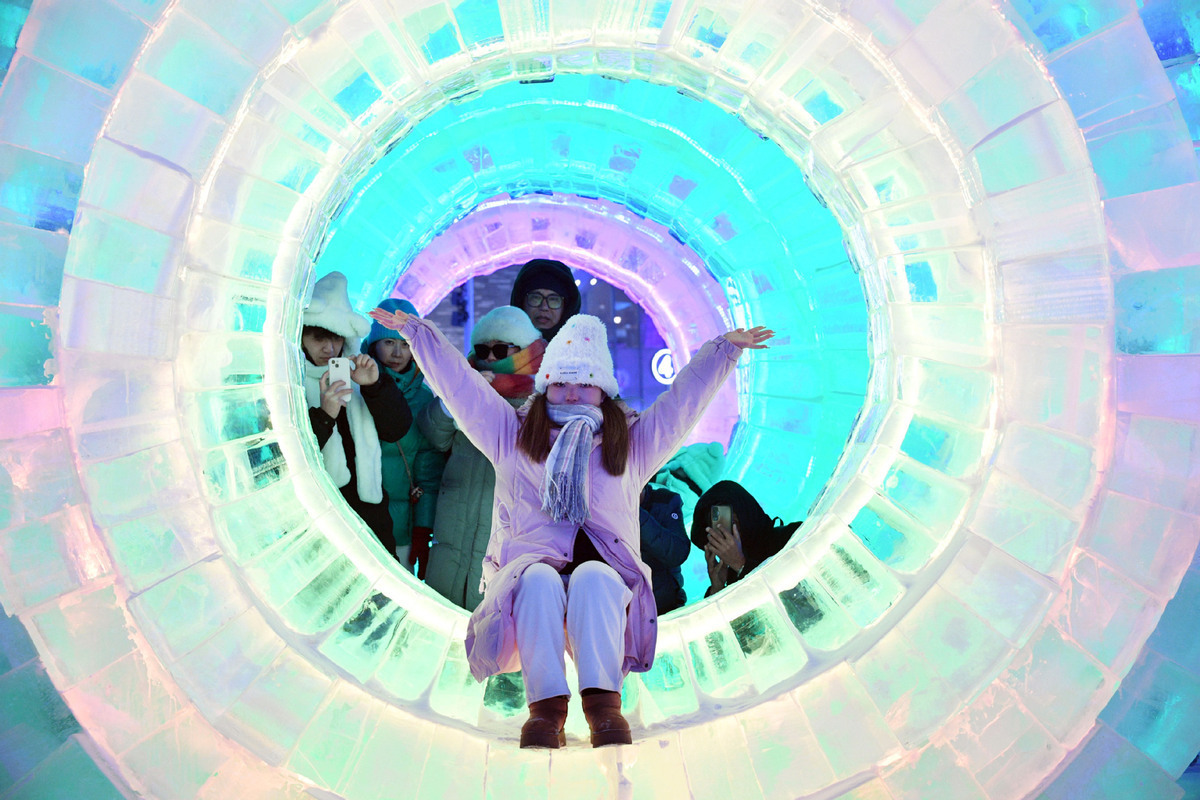
A visitor poses for photos at the Harbin Ice-Snow World in Harbin, Northeast China's Heilongjiang province, Jan 5, 2025. [Photo/Xinhua]
BEIJING - From winter sports to snow tourism, China is actively tapping into its ice and snow resources to create new growth drivers for the world's second-largest economy, according to multiple officials and experts at a recent roundtable.
Tourists are now more willing to pay for leisure and cultural activities related to ice and snow tourism, said Dai Bin, president of the China Tourism Academy, at the latest episode of the China Economic Roundtable, an all-media talk show hosted by Xinhua News Agency.
Dai said that various new business models are arising from the thriving industry. "Once tourists arrive at their destinations, they look for accommodation, dining options and interactions with locals. What attracts them most is often the unique folk customs and cultural heritage of the region."
Harbin, China's northernmost provincial capital, exemplifies the country's thriving ice and snow economy. During the eight-day Spring Festival holiday that concluded on Tuesday, Harbin Ice-Snow World attracted over 610,000 visits. This ice theme park, featuring dazzling ice sculptures, saw more than 100,000 visits on Feb 1, setting a new record for daily attendance compared to previous years.
In addition to Harbin, various new ice and snow tourism attractions have emerged across Heilongjiang province. These include the snow-covered forests of Yichun, one of China's most forested cities, winter birdwatching in Qiqihar, where native red-crowned cranes can be spotted, and aurora viewing in Mohe, near the China-Russia border, according to Qi Bin, deputy director of the Heilongjiang provincial department of culture and tourism.
Peng Fuwei, an official with the National Development and Reform Commission, China's top economic planner, said that China has established a dual manufacturing-service model to develop its ice and snow economy. According to Peng, the country can now produce 15 kinds of ice and snow sports equipment, ranging from snowboards to snow-making machines.
In ice and snow services, Peng said multiple sectors flourish simultaneously, including competitions and performances, catering and accommodation, winter sports training, and leisure tourism.
Looking ahead, Peng said that the central budget will continue to support the construction of public service facilities for eligible ice and snow sports and tourism. Also, qualifying ice and snow tourism equipment will receive support through ultra-long special treasury bonds for equipment upgrades.
According to China's national blueprint for the ice and snow economy, the industry is expected to play a greater role in expanding employment and promoting high-quality development by 2030. Ice and snow consumption will be a key growth driver for domestic demand.
By then, several high-quality destinations for ice sports and tourism will be established, and the total scale of the ice and snow economy is projected to reach 1.5 trillion yuan ($209.2 billion), the document says.